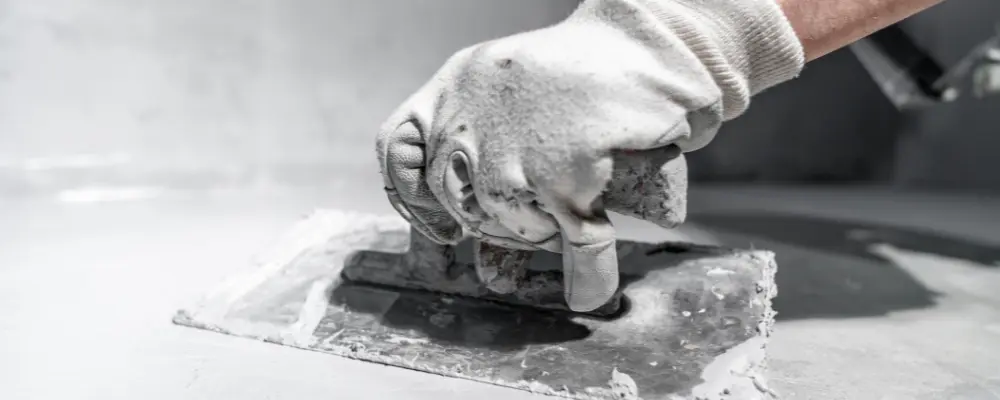Cement is the most common building material used in construction because it has binding properties which help in the formation of concrete and mortar, and impart strength to the structure. The properties of cement depend on its composition. Understanding cement composition requires knowing what functions the constituents perform in the making of cement. Through adjusting quantities of cement ingredients, the desired quality of cement can be achieved during the manufacturing of cement. This blog brings you deep insights into the types of cements, their compositions and properties as well as their ingredients.
Cement Composition and Their Functions
The following are cement compositions and properties:
- Major Cement Chemical Components
- Calcium Oxide (CaO)
- Silica (SiO2)
- Alumina (Al2O3)
- Iron Oxide (Fe2O3)
- Minor Cement Chemical Components
- Gypsum (Calcium Sulfate)
- Magnesia (MgO)
- Alkalis (Sodium and Potassium Oxides)
Major Cement Chemical Components and Their Functions
The basic materials of cement or raw materials employed in the production of cement are as follows:
- Calcium Oxide (CaO): Also known as lime, CaO makes up most of the cement. It comes from materials with calcium, like limestone, chalk, or shells. The strength and binding properties of cement are due to the presence of lime. The accurate amount of lime in cement is crucial, as too much lime can make cement unstable, and a small quantity of lime can affect the strength of cement and its setting time.
- Silica (SiO2): Silica is derived from sand, clay, or rocks. When mixed with water, it allows cement to harden, contributing to its durability. Silica also helps form calcium silicates, which are responsible for the ultimate strength of concrete.
- Alumina (Al2O3): It comes from clay, bauxite, or recycled aluminum. Alumina helps cement resist chemical attacks from sulfates and acids and withstand high temperatures. It also aids in forming calcium aluminates, which are responsible for the initial setting and early strength of cement.
- Iron Oxide (Fe2O3): Obtained from clay, iron ore, or scrap iron, iron oxide gives cement its characteristic grey color. It acts as a fluxing agent and helps reduce the melting temperature of raw materials, making cement manufacturing relatively easy.
Minor Cement Chemical Components and Their Functions
The main ingredients form cement’s core, but there are some other minor cement mineral compositions, which are:
- Gypsum (Calcium Sulfate): Gypsum is added to cement to slow down its setting, keeping it workable for a longer time. Gypsum reacts with tricalcium aluminate, slowing down the hydration process.
- Magnesia (MgO): A small amount of magnesia helps in improving the strength of cement. However, the high quantity of magnesia can cause cement expansion and crack due to the formation of magnesium hydroxide.
- Alkalis (Sodium and Potassium Oxides): These elements impact cement’s strength and setting time. When alkalis are present in high amounts, they can react with aggregates, leading to concrete deterioration over time.
Cement Ingredients Percentage:
Cement Ingredients Percentage
The most commonly used type of cement is Portland cement. The Portland cement composition ratio is approximately:
- Calcium Oxide (CaO): 60-67%
- Silica (SiO₂): 17-25%
- Alumina (Al₂O₃): 3-8%
- Iron Oxide (Fe₂O₃): 0.5-6%
- Magnesium Oxide (MgO): 0.1-4%
- Sulfur Trioxide (SO₃): 1-3%
- Alkalis (Na₂O + K₂O): 0.4-1.3%
The Compounds of Cement
During the manufacturing of cement, four main compounds are formed. These compounds of cement are present in different proportions and roles to play. They are as follows:
- Tricalcium Silicate (C3S): It is responsible for cement’s early strength development. It hydrates quickly and greatly contributes to the initial setting of cement.
- Dicalcium Silicate (C2S): Despite its slower hydration than C3S, C2S is responsible for cement’s ultimate strength. It also adds to concrete’s overall strength and durability.
- Tricalcium Aluminate (C3A): It hydrates quickly and is responsible for initial setting time of cement. It reacts very fast with water, giving immediate strength but producing high amount of heat of hydration. However, it makes cement prone to sulfate attack.
- Tetracalcium Aluminoferrite (C4AF): C4AF contributes to the colour of the cement and provides some strength. It works as a fluxing agent during clinkering process. It also helps to build the microstructure of cement.
Cement Compounds Percentage and Ratio:
The typical composition ratio of these compounds of cement can vary, but a common formulation is:
- Tricalcium Silicate (C3S): 50-60%
- Dicalcium Silicate (C2S): 15-25%
- Tricalcium Aluminate (C3A): 5-10%
- Tetracalcium Aluminoferrite (C4AF): 5-15%
These percentages are carefully managed throughout the manufacturing process to ensure that the end product has the necessary qualities. The careful monitoring of the cement composition ratio ensures that the finished product meets precise standards for strength, durability, and setting time.
The Manufacturing Process of Cement:
Manufacturing cement is a tough process and is composed of the following stages:
- Raw Material Extraction: Limestone, clay, and other materials are quarried and transported to the cement plant.
- Crushing and Grinding: The raw materials are crushed and ground into a fine powder called as the raw meal.
- Clinker Formation: The raw meal is heated in a kiln at temperatures of about 1450°C forming clinker (small nodules of partially fused material).
- Grinding: The clinker is cooled down and then ground together with gypsum to produce cement. Fly ash, slag or limestone might be added to change some properties of final cement.
- Storage and Distribution: After manufacturing it is packed and stored in bags and then distributed.
The cement composition is a complex combination of raw materials and chemical compounds. Understanding cement composition is crucial since each constituent has unique features. The exact cement composition ratio of influences cement’s performance capabilities, making it a versatile material in the construction sector. Engineers and construction professionals can make informed selections about cement composition and qualities to get the required results in their projects. The management of cement ingredients percentage and ratio throughout the manufacturing process assures the creation of high-quality cement that fulfils the building industry’s unique requirements.

